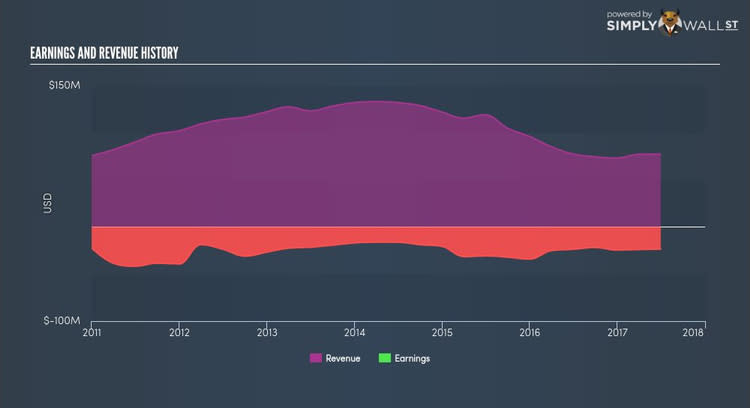Why You Need To Look At This Factor Before Buying Capstone Turbine Corporation (CPST)

For Capstone Turbine Corporation’s (NASDAQ:CPST) shareholders, and also potential investors in the stock, understanding how the stock’s risk and return characteristics can impact your portfolio is important. CPST is exposed to market-wide risk, which arises from investing in the stock market. This risk reflects changes in economic and political factors that affects all stocks, and is measured by its beta. Not all stocks are expose to the same level of market risk, and the broad market index represents a beta value of one. Any stock with a beta of greater than one is considered more volatile than the market, and those with a beta less than one is generally less volatile.
Check out our latest analysis for Capstone Turbine
An interpretation of CPST's beta
Capstone Turbine’s beta of 0.86 indicates that the company is less volatile relative to the diversified market portfolio. This means the stock is more defensive against the ups and downs of a stock market, moving by less than the entire market index in times of change. CPST’s beta indicates it is a stock that investors may find valuable if they want to reduce the overall market risk exposure of their stock portfolio.
How does CPST's size and industry impact its risk?
A market capitalisation of USD $41.76M puts CPST in the category of small-cap stocks, which tends to possess higher beta than larger companies. In addition to size, CPST also operates in the electrical equipment industry, which has commonly demonstrated strong reactions to market-wide shocks. Therefore, investors may expect high beta associated with small companies, as well as those operating in the electrical equipment industry, relative to those more well-established firms in a more defensive industry. This is an interesting conclusion, since both CPST’s size and industry indicates the stock should have a higher beta than it currently has. There may be a more fundamental driver which can explain this inconsistency, which we will examine below.
Is CPST's cost structure indicative of a high beta?
An asset-heavy company tends to have a higher beta because the risk associated with running fixed assets during a downturn is highly expensive. I test CPST’s ratio of fixed assets to total assets in order to determine how high the risk is associated with this type of constraint. With a fixed-assets-to-total-assets ratio of greater than 30%, CPST appears to be a company that invests a large amount of capital in assets that are hard to scale down on short-notice. As a result, this aspect of CPST indicates a higher beta than a similar size company with a lower portion of fixed assets on their balance sheet. However, this is the opposite to what CPST’s actual beta value suggests, which is lower stock volatility relative to the market.
What this means for you:
Are you a shareholder? CPST may be a worthwhile stock to hold onto in order to cushion the impact of a downturn. Depending on the composition of your portfolio, low-beta stocks such as CPST is valuable to lower your risk of market exposure, in particular, during times of economic decline.
Are you a potential investor? Before you buy CPST, you should look at the stock in conjunction with their current portfolio holdings. CPST may be a great cushion during times of economic downturns due to its low beta. However, its high fixed cost may mean margins are squeezed if demand is low. I recommend taking into account its fundamentals as well before leaping into the investment.
Beta is one aspect of your portfolio construction to consider when holding or entering into a stock. But it is certainly not the only factor. Take a look at our most recent infographic report on Capstone Turbine for a more in-depth analysis of the stock to help you make a well-informed investment decision. But if you are not interested in Capstone Turbine anymore, you can use our free platform to see my list of over 50 other stocks with a high growth potential.
To help readers see pass the short term volatility of the financial market, we aim to bring you a long-term focused research analysis purely driven by fundamental data. Note that our analysis does not factor in the latest price sensitive company announcements.
The author is an independent contributor and at the time of publication had no position in the stocks mentioned.

